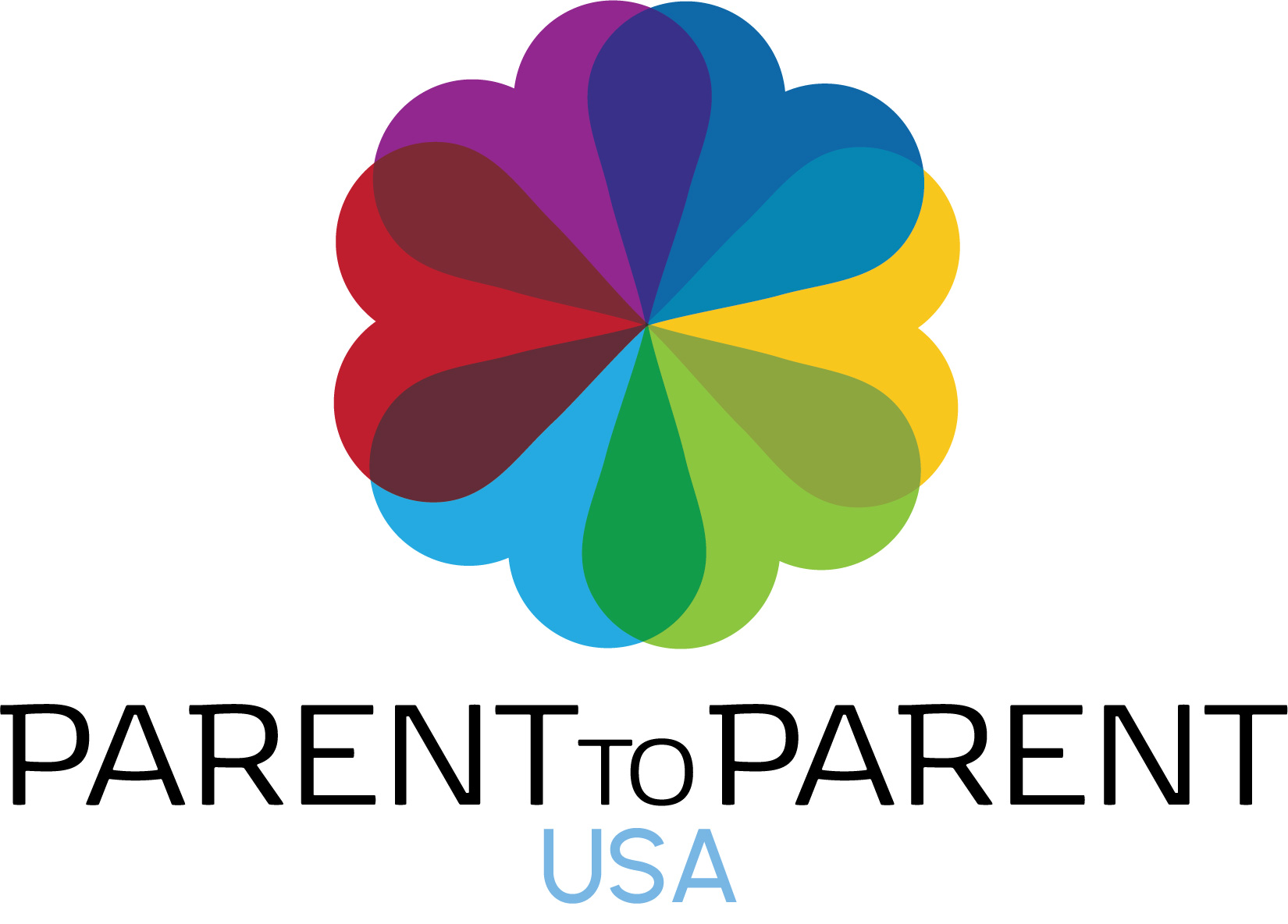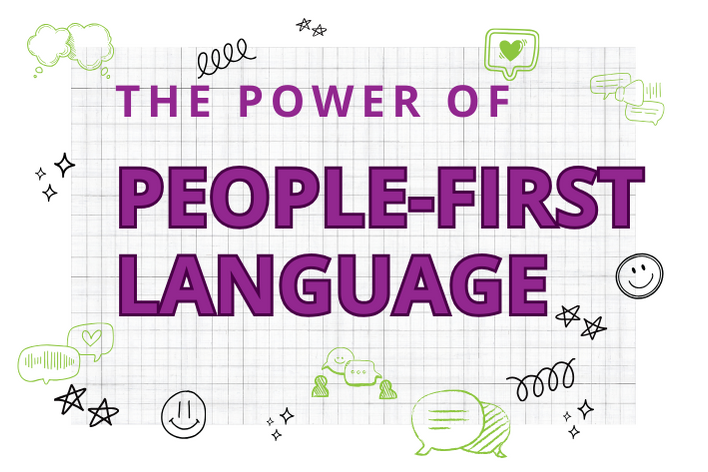Words have the power to shape our perceptions and influence our actions, and nowhere is this more evident than in the language we use to describe individuals with disabilities. In this blog post, we’ll explore the significance of people-first language, its historical context, and practical guidelines for using it respectfully. Join us on a journey where words become instruments of inclusion, curiosity, and creativity, emphasizing that every person is more than their disability.
Understanding People-First Language
What is people-first language? You might already be familiar with its counterpart, identity-first language. When describing someone with identity-first language, one would refer to someone as “a disabled writer” as opposed to “the writer who has a disability”. The second description is an example of people-first language.
People-first language is more humanizing as it puts a person before their diagnosis. It aims to eliminate generalizations, assumptions and stereotypes by first describing who an individual is before describing what disability they have. The goal of people-first language is to avoid language that labels the individual. Through the use of this language, individuals with disabilities are seen with respect.
It is important to avoid stereotypical language and old-fashioned phrases that can make someone feel “less-than”. Emphasizing limitations not only perpetuates discrimination, it also sets individuals up to value themselves as much as they seem to be valued, which could easily put their disabilities at the forefront of their identity. This could lead to their identity being defined by their disability, leading them to lose sense of their true self beneath misguided speech.
My husband and I do not see Down syndrome as a defining characteristic, but one of many our son embodies.
Kari Wagner-Peck
People-first language can change the way individuals view themselves, as well as how we view an individual, which is why it is so important to use accurate and respectful language.
Historical Context and Advocacy Movements
People-first language was first written in legislation for the American with Disabilities Act in 1990. The 1970s saw what some have called the first major advocacy movement for people with disabilities with the formation of the People First movement. They focused on individuality, personhood, unique needs and experiences, and more. In the 1980s, the People with AIDS movement began, which was in response to those who were calling individuals with AIDS “AIDS victims”. Nowadays people are addressing the negative phrasing that may be used to describe people with addiction in public health legislation. Addiction, for example, has been called a brain disorder, and thus “addict” hardly does anything but stigmatize the individual.
The Growing Need for Compassionate Language
In our evolving society, there is a growing recognition of the importance of inclusive language, particularly when referring to individuals with developmental disorders or disabilities of various kinds. More than 26% of American adults have disabilities, nearly 50% have chronic illnesses, and almost 25% live with mental illness. Additionally, 13.8 million children under the age of 18 have special healthcare needs. 1 in 36 children have been identified with autism in the U.S. according to the CDC, and prevalence has increased 178% since 2000. The use of people-first language plays a crucial role in promoting respect and recognizing the individuality of each person, regardless of their abilities or conditions.
Guidelines for Respectful Language
People-first language helps by telling what the person has and not what the person is. Follow these tips to use respectful language when communicating with or referring to an individual with disabilities.
- Never equate a person with a disability, or label them by their medical diagnosis, such as calling an individual an “epileptic person.”
- Also keep in mind to avoid negative words that imply a tragedy such as saying a person “suffers from”, is “a victim of”, or is “afflicted with”.
- “Handicap” is a word used to refer to a barrier created by people or the environment, and it should not be interchanged with the word “disability” when referring to a functional limitation that interferes with a person’s life.
- Similarly, avoid using euphemisms such as physically challenged, inconvenienced, or differently abled. Be as sensitive as possible when using words such as, “disorder”, “impairment” or “abnormality”.
- Sometimes it is difficult to describe the nature of someone’s condition, and some phrases such as “high” and “low” functioning or “severe” instead of “significant” are becoming outdated.
Most importantly, promote understanding, respect, dignity, and a positive outlook in life.
Respecting Identity-First Language
Not all people with disabilities agree on which language is preferred. Individuals will vary as to how they refer to themselves and how they would like you to refer to them. Some communities may prefer to use identity-first language because they feel the trait is a core component of their identity.
For example, most Deaf people prefer identity-first language, rejecting “person with hearing impairment” because many do not perceive an inability to hear as a deficit. They want to emphasize that aspect of their identities, and how it has shaped them, and such should be respected. In the autism community, many self-advocates and their allies prefer terminology such as “Autistic”, viewing autism as an inherent part of their identity.
Hence the importance of asking: it may sound daunting, but the contrary would be disrespectful.You can show the most respect for an individual by being curious, creative, and flexible. By learning which language certain groups and organizations use and why, you can stay curious. By using different words or phrases, you can be creative. By asking individuals what language they prefer, or are most comfortable with, you can be flexible.
The Impact of Language
Inclusive language is the communication of belonging.
Harlon Cowsar, II
Father of an individual with a disability who also has a disability himself and Adult Program Coordinator at Families Helping Families of Acadiana, P2P USA Alliance Member in Louisiana
At Parent to Parent, we believe that inclusive language is not just about words; it’s a powerful tool that bridges the gap between individuals, creating an environment where everyone feels valued and accepted. It communicates the message that every person, regardless of their background, abilities, or differences, belongs to the same community.
The words we choose carry the weight of respect, and by using them mindfully, we contribute to a world where every person is seen for who they truly are – a person first.
In fact, when discussing specific people, I have never once heard anyone — self-advocate, parent, teacher, or otherwise — refer to a person as anything except by his or her name.
Lydia Brown, autistic disability rights activist, writer, attorney, and public speaker
Acknowledgment: A Special Thanks to Our Volunteer
We want to extend our heartfelt appreciation to Carmen Perrone, who generously contributed his time and expertise to help us research and write this piece. Thank you, Carmen, for your outstanding contribution to our vision of fostering inclusion and belonging through the power of words.
References
- Writing Respectfully: Person-First and Identity-First Language, National Institutes of Health
- Disability Language Style Guide, National Center on Disability and Journalism
- Achieving Equity Through Language, AMCHP
- Identity-First Language, Autistic Self Advocacy Network
- For children: Just Ask! by Sonia Sotomayor

